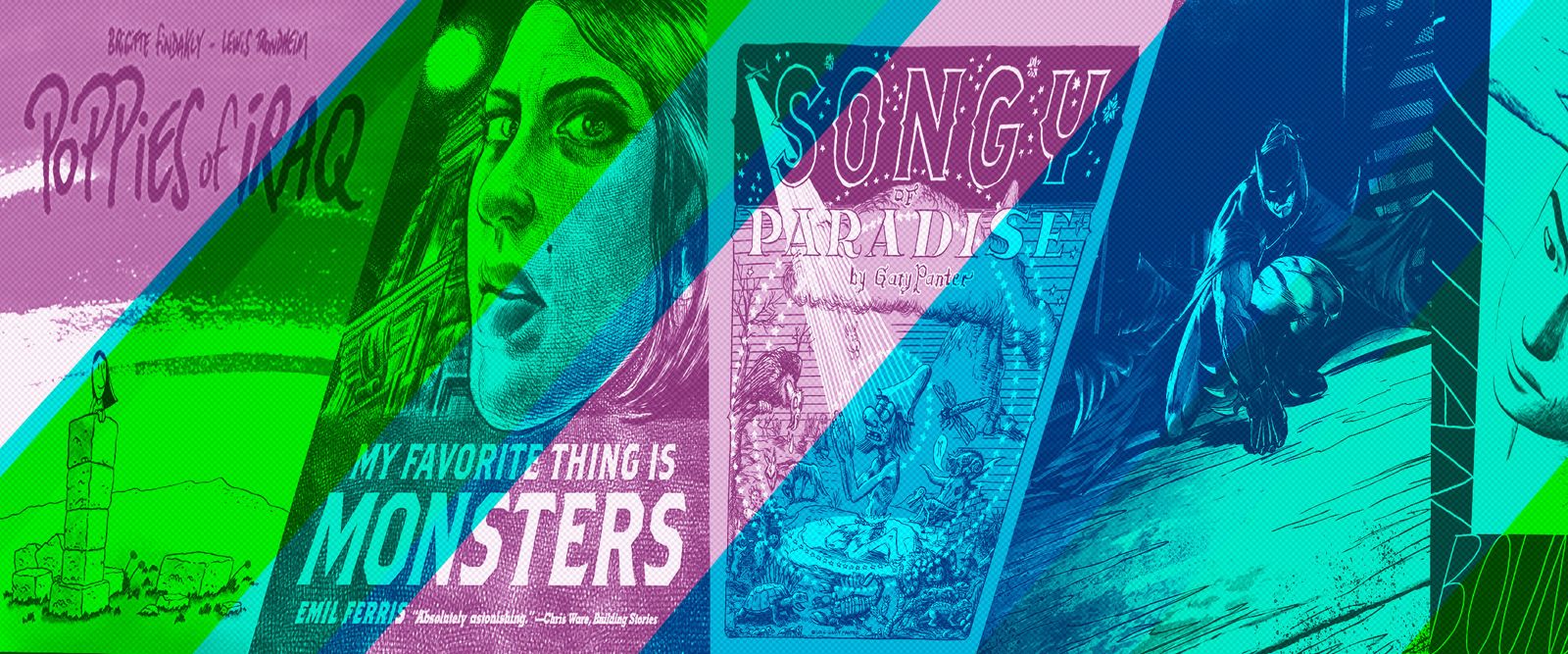There’s been a lot of soul-searching in the world of the funny books this year. The so-called Big Two publishers, Marvel and DC, both faced avalanches of criticism, albeit for wildly different reasons. While explaining a recent sales slump, Marvel was lambasted by progressive fans after its vice-president of sales said retailers weren’t into the company’s recent diversity initiatives; to make matters worse, their new editor-in-chief faced harsh words after he admitted to pseudonymously posing as a Japanese writer in the past. DC was rolling in comparative acclaim and financial buoyancy, but was hit with a far more public scandal when one of its most prominent editors was accused of sexual assault and subsequently fired. Independent publishers were put in the hot seat, as well: Drawn and Quarterly canceled a book due to some transphobic comments from its creator, and Image took heat for veteran writer-artist Howard Chaykin’s depictions of violence against a trans sex worker and the lynching of a South Asian man. The industry has had to ask itself hard questions about the responsibilities of creating and consuming comics, and has yet to come up with satisfying answers.
Nevertheless, there were plenty of good reads out there in 2017, and below is a list of ten exceptional books published this year. To keep things manageable, we only included bound books, not individual issues of serial publications. However, bound editions that collect individual issues for the first time were very much eligible, although we didn’t include collections of relatively old comics (you won’t find Donald Duck strips here, for better or worse). For those of you who will inevitably ask: Mister Miracle isn’t on here because it hasn’t been collected into a trade yet. Calm down. And now, to quote the old spinner racks at the drugstore: Hey, kids! Comics!
You & a Bike & a Road by Eleanor Davis
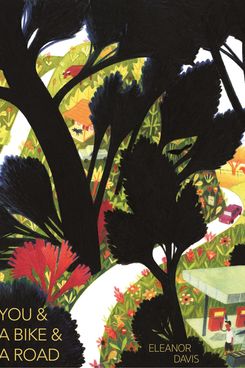
“Turn your head,” Eleanor Davis writes in You & a Bike & a Road. The page is sparse, featuring only the simple lines of a barren landscape and Davis’s bluntly drawn head, her mess of hair blowing in the wind. “Horizon. Horizon.” Next page: a quick sketch of a human form and the phrase, “Your sovereign body.” Next: no images at all, merely the words “God’s thrilling indifference.”
This is the book in microcosm: pensive reportage from the forgotten places of the American continent in the form of urgently scribbled line work and simple poetry. During a period of mental and emotional strife (“I was having trouble with wanting to not be alive”), Davis sets out on a bicycle journey from Arizona to Georgia in order to clear her head. Her chronicle of that odyssey is freestyle, eschewing panel borders in favor of dreamy assemblages of figures and backdrops that the eye somehow instinctually knows how to navigate. The tale is straightforward, but it is also a compelling exploration of the ways we run (or ride) from our problems, only to find them magically appearing on the road before us. Davis, nonetheless, powers toward them with head pointed forward, and her depiction of that process is as subtly cathartic as it is elegant.
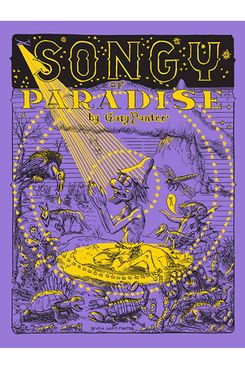
Songy of Paradise by Gary Panter
Don’t let the slenderness of Songy of Paradise fool you — if you’re reading it right, it’ll take a sizable block of time and multiple rereads to properly take it in. In just a few dozen pages, punk-comics pioneer Gary Panter offers up one of the most visually gripping and emotionally soaring pieces of his career. The concept is simple: It’s an abridged retelling of Milton’s Paradise Regained in which the part of Christ is played by a “hillbilly” named Songy. The magic lies in the execution. While Satan tries to tempt Songy with worldly pleasures and powers in a barren wasteland, we see vistas that are both crude and expansive; character designs that are hideous and unforgettable. Beelzebub is particularly interesting, rendered with little crossword-esque boxes on his various forms, a technique Panter claims to have picked up from traditional Javanese art. All the while, Songy’s rejections of the Adversary’s offers express a blunt and simple dignity, one that feels all the more admirably pure by its contrast with Panter’s deliberately messy ink work. Panter is one of the great living masters of experimental comics, and Songy serves as a primer for newbies and a treat for connoisseurs of his idiosyncratic takes on the classics of the Western canon.
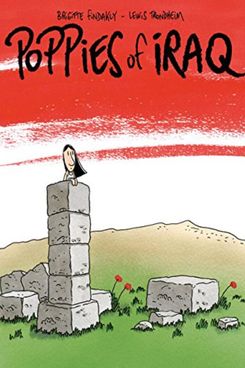
Poppies of Iraq by Brigitte Findakly and Lewis Trondheim
The release and success of Art Spiegelman’s Maus opened the door for the comics subgenre of the political-trauma memoir, and since then, we’ve been blessed with a small array of magnificent works exploring how families and individuals survive the world’s great upheavals. There’s a new entrant into that pantheon in the form of Poppies of Iraq, Brigitte Findakly’s account — co-written and illustrated by her husband, Lewis Trondheim — of her childhood in the Iraq of the 1950s, ’60s, and ’70s. Its power lies in the contrast between the matter-of-fact nature of the text and visuals, and the dread and horror of the backdrop. Through Findakly’s sweet, spare prose, the reader learns about daily existence in a period during which regimes rose and fell and life became increasingly dominated by a ramshackle authoritarianism; in Trondheim’s cutely cartoonish vision, families gather with faces of bemused calm and soldiers cheerfully leap in formation like uniformed deer during bits of exposition. By book’s end, one feels the tragic tide of history rolling ever onward, but there is also hope to be found here — the hope that, no matter what befalls a nation, there will always be individuals who can craft something beautiful by virtue of their survival.
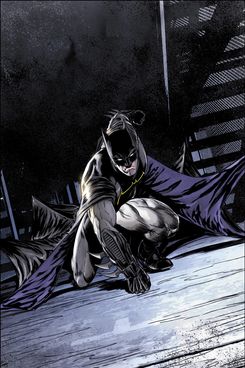
Batman: The War of Jokes and Riddles by Tom King, Mikel Janín, June Chung, Clay Mann, Danny Miki, John Livesay, Gabe Eltaeb, Seth Mann, Jordie Bellaire, and Clayton Cowles
A great Batman story has to be cool. When its textual and visual parts are taken in sum, it has to somehow make you think that an egomaniac who dresses up like a flying rodent is someone you wish you could be. It has to make his world, filled with impossibly weird head cases who commit gimmicky crimes, one you’d like to live in. It has to toss around just enough thematic weight to feel profound while still being a titillating pulp fantasy.
The War of Jokes and Riddles finds that cool.
One needs only the barest bit of Bat-knowledge to take in this epic about the Dark Knight being caught in the crossfire between the Joker and the Riddler, but longtime fans will thrill at the ways writer Tom King constructs something new out of well-worn building blocks. The artists are aflame, especially penciller Mikel Janín and colorist June Chung, who make War more cinematic than most DC movies. And they even managed to put D-list villain Kite Man in the spotlight and make him cool.
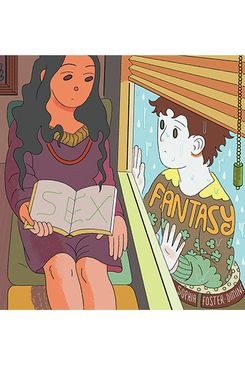
Sex Fantasy by Sophia Foster-Dimino
There’s a musicality to Sophia Foster-Dimino’s Sex Fantasy. Despite the fact that its contents were initially published as narratively unrelated, individual comics, not constructed as a unified book, it feels remarkably holistic, like a little symphony. We begin in spare staccato, with a series of pages featuring images accompanied by single lines of text all beginning with “I”: “I carry heavy boxes for you,” “I suffer a head injury,” “I’m a stenographer,” and so on. Then come troubling little vignettes that don’t quite count as stories, per se: One person holds another from behind and makes harsh claims like “your lover is a deep dark delicious well & you’re nothing but a bucket / not even a cool bucket”; two people meet for a bizarre coffee date in which one of them makes statements about life that read like Jenny Holzer gone askew, such as, “You have to take nudes to get nudes.” Then we rise in crescendo to short narratives, depicting a failing marriage on vacation, an ill-fated trip to see an internet boyfriend, and other little slices of life, all of them impressionistic and moving. I suppose this progression is best explained as a sign that Foster-Dimino has grown as an artist over the course of the initial releases of the Sex Fantasy installments, which means we can look forward to a future with more and even better work from this fascinating new talent.
The Hunting Accident: A True Story of Crime and Poetry by David L. Carlson and Landis Blair
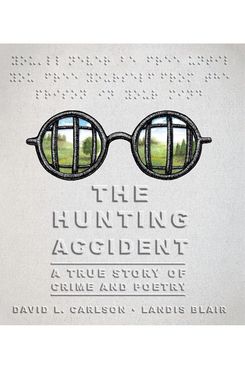
The Hunting Accident is, above all, a story about empathy. It’s the lightly fictionalized account of a bizarre true story, one in which an undereducated street tough meets infamous child-murderer Nathan Leopold Jr. in prison and learns about high art from that snobbily intellectual sociopath. The tale becomes a morally ambiguous spin on Pygmalion, narrated by an older-and-wiser Galatea long after the period of education ended. Held aloft by the stunning chiaroscuro crosshatches of artist Landis Blair (surely this book will be a star turn for him), the narrative flips back and forth in time, but never loses its focus on art’s power to make us better understand even the worst humans. At times, you find yourself wondering whether writer David L. Carlson is going too easy on Leopold, but that’s sort of the point: We want to believe in redemption in the abstract, but we rarely rise to the challenge of imagining it for those who have committed great evil. It’s up to the reader to decide whether someone who can give the gift of enlightenment has outweighed his own sins, but there is no doubt by book’s end that The Hunting Accident is its own successful experiment in using art to exercise the moral mind.
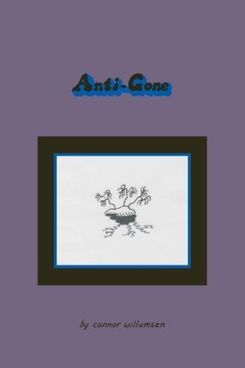
Anti-Gone by Connor Willumsen
There are pages in Connor Willumsen’s Anti-Gone that hardly feel like comics at all. Typically, they come in moments of scene-setting, when we arrive at one of the writer-artist’s various post-apocalyptic dreamscapes. The page will be mostly blank except for little sketches, unbound by panel borders: a hand touching grimy water, a silhouette in a clearing of trees, a dense lineup of ruined skyscrapers. We’re always eased smoothly back into a slightly more recognizable format of words and pictures, but we’ve been expertly unsettled and disoriented. As well we should be. This is a loose tale about a couple who blithely traverse a drowned planet, doing exotic drugs and watching movies they’ve already seen. One of them is a muscle-bound bro whose chilled-out vibe belies a profound sensitivity and sadness; the other is a femme who may or may not be some kind of anthropomorphic canine and who doesn’t seem to know what she wants, other than to have a near-death experience. They pursue their stoned little dreams, and we watch with alternating pity and envy — the former because nothing seems to matter in their world, and the latter because that world is rendered with such fantastic beauty. As you can tell by this list, Koyama has published more than its fair share of brilliant works this year, but Willumsen’s might be the indie house’s crowning glory.
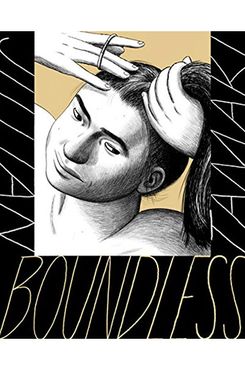
Boundless by Jillian Tamaki
There’s a line that pops up about a quarter of the way through Jillian Tamaki’s Boundless that I’m sure she’d be embarrassed to apply to her own work, so I’ll do it for her: “What was I really looking for? Hope. Faith. Magic. Something that would let me feel normal. Make me feel worthy of love.” Hope, faith, and magic are deeply embedded in this collection of short fictions — emphasis on deeply, as the surface, however innovative and lush, can sometimes feel cynical and ironic. But as Boundless sits in your mind after you close it, its message reveals itself: We’re all lonely as hell in 2017 and will do almost anything to feel better. The vignettes show people stabbing at connection and meaning in feeble, self-defeating ways — obsessing over a cult-hit movie, trying a new skin-care product, trawling a mysterious new social network, attempting to decipher a curious audio file, and so on — but Tamaki never makes fun of these stabs. She drafts character designs that are softly evocative, enticing us to see ourselves in these desperate, misguided people. She comes up with narrative situations so bizarre that you can’t help imagining how you’d respond to them if they happened to you. In the time it takes you to read the tome, you’re transported to a world that is at once surreal and familiar, built out with tender majesty. One is never bored and always awed by this emerging master’s inventiveness.
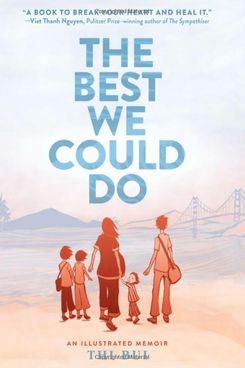
The Best We Could Do by Thi Bui
The 157th page of The Best We Could Do features a statement that, at first blush, reads like a banality: “Every casualty in war is someone’s grandmother, grandfather, mother, father, brother, sister, child, lover.” Sure, fine, war is hell; whatever. But pause and ask yourself: Can you name ten Vietnamese people who died in the Vietnam War? To remember and honor those who were killed or wounded (and mental wounds certainly count) in that grinding conflict is a moral obligation for every American, yet it’s an obligation that too often goes unfulfilled. That’s one of the many reasons this fantastic debut book from writer-artist Thi Bui is so essential. It acts as both a stirring graphic memoir and an assertive act of witness. In chronicling the author’s family’s experiences before, during, and after the war — and her own experiences as a refugee child in the United States — the story paints a rich, detailed, and disturbing portrait of traumas both familial and national. And I do mean paints — the watercolor artwork is gorgeous, meshing seamlessly with the poetic melancholy of the text. The verbiage and the visuals assemble into an expedition that is both universal — what family doesn’t have secrets that eat away at its collective health? — and vitally specific. As the story jumps back and forth in time during Bui’s nonlinear discovery of her clan’s background, we are held in the hands of a creator whose story about immigration couldn’t have come at a more germane time. Here’s hoping that we learn from what Bui is here to teach.
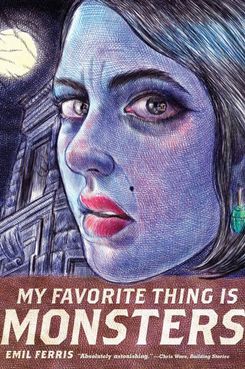
My Favorite Thing Is Monsters by Emil Ferris
There’s an alternate universe, one located troublingly close to our own, where Emil Ferris’s My Favorite Thing Is Monsters doesn’t exist. There were so many factors working against the release of this astounding book: Ferris spent decades laboring in day jobs without a single published comic; a battle with the West Nile virus left her partially paralyzed and without the use of her right hand for years; when she crafted the manuscript for Monsters, publisher after publisher turned it down; and when it was finally ready for sale from Fantagraphics, the ship containing the printed copies was detained at the Panama Canal. Luckily, we live in this universe, the one where Ferris can grin with confidence as the year-end best-of lists roll in. An indisputable instant classic has arrived.
To read Monsters is to take in plot points and images that one feels confident will be discussed in college courses sooner rather than later. It’s an epic told through the voice and pen of its narrator, 10-year-old Karen Reyes, a precocious biracial denizen of lower-middle-class Chicago. Taking the form of sketches and script scribbled in Karen’s notebook, the story is about crossing thresholds: between childhood and adolescence, tension and release, fiction and reality, comfort and calamity, life and afterlife, self-denial and self-revelation. It is at once a noir, a bildungsroman, a work of impressionism, a celebration of monster movies, a memoir of a city on the brink, and — improbably enough — an exploration of a little-known aspect of the Holocaust. Though there may someday be a film adaptation, it can only be a loose one, as Monsters is visually and conceptually presented in a way that is light-years away from a filmic storyboard — it is, deliciously and deliriously, a comic book. If you want to see what this wild medium is capable of, fold back the cover and lose yourself in what comes next.
